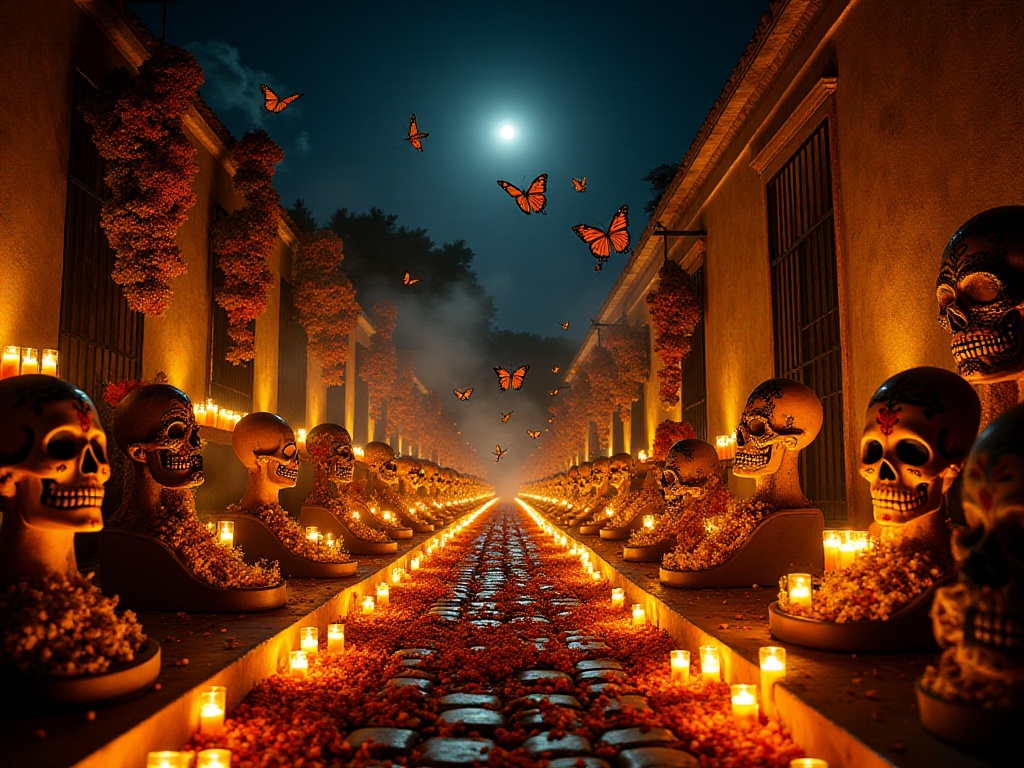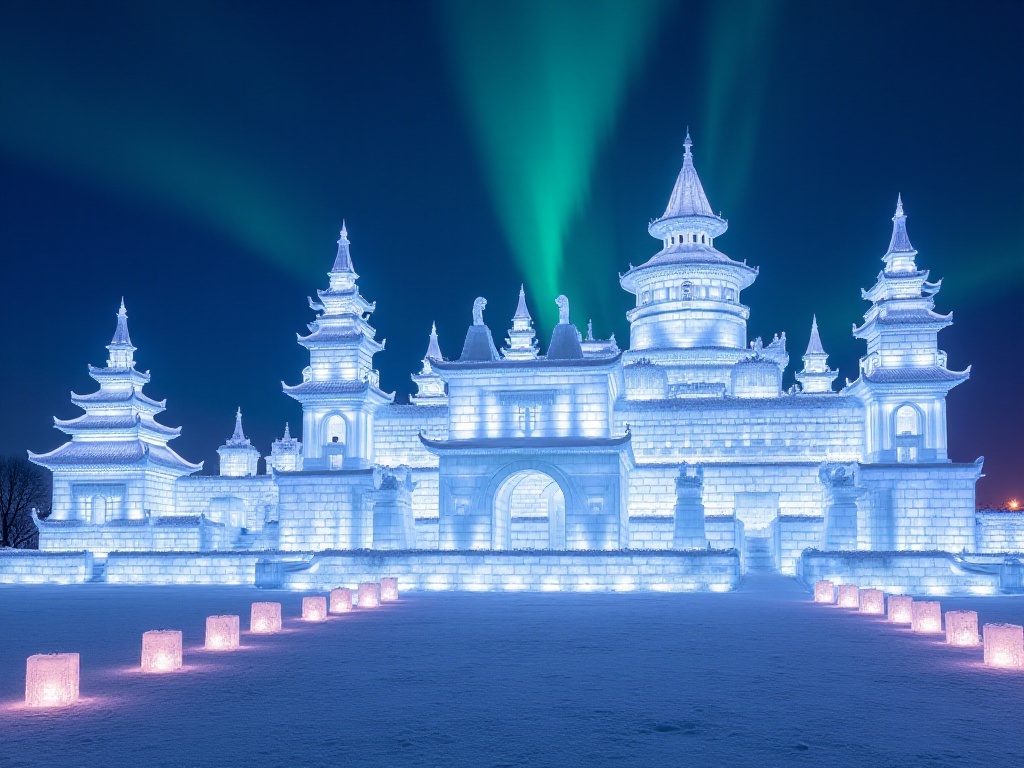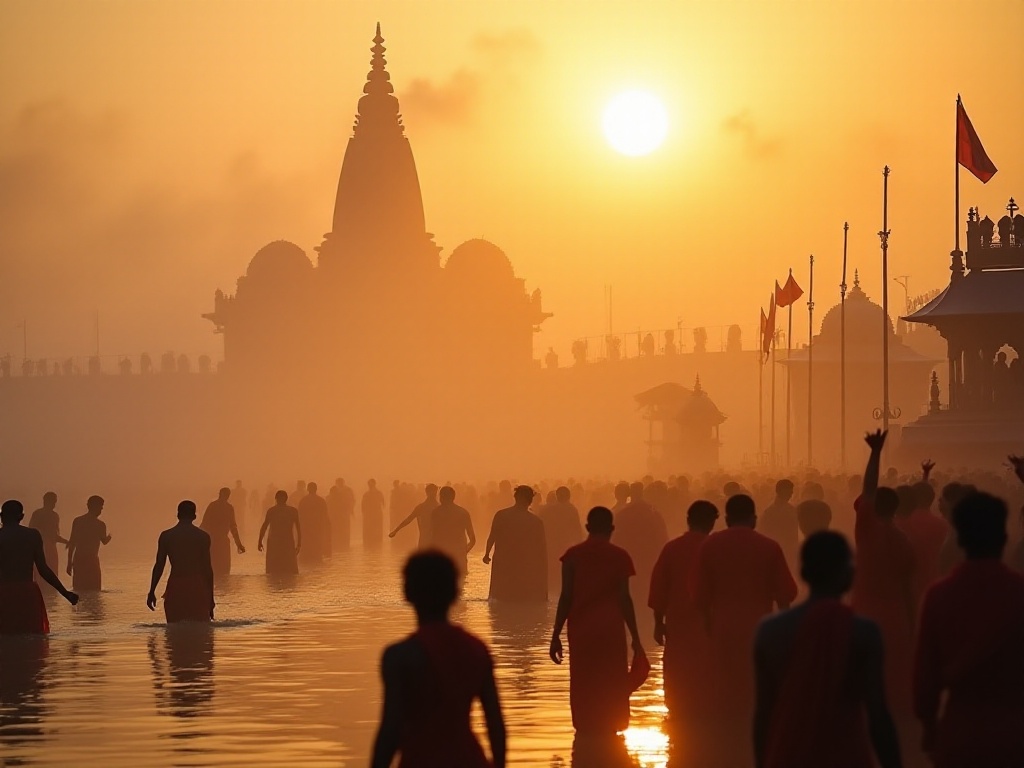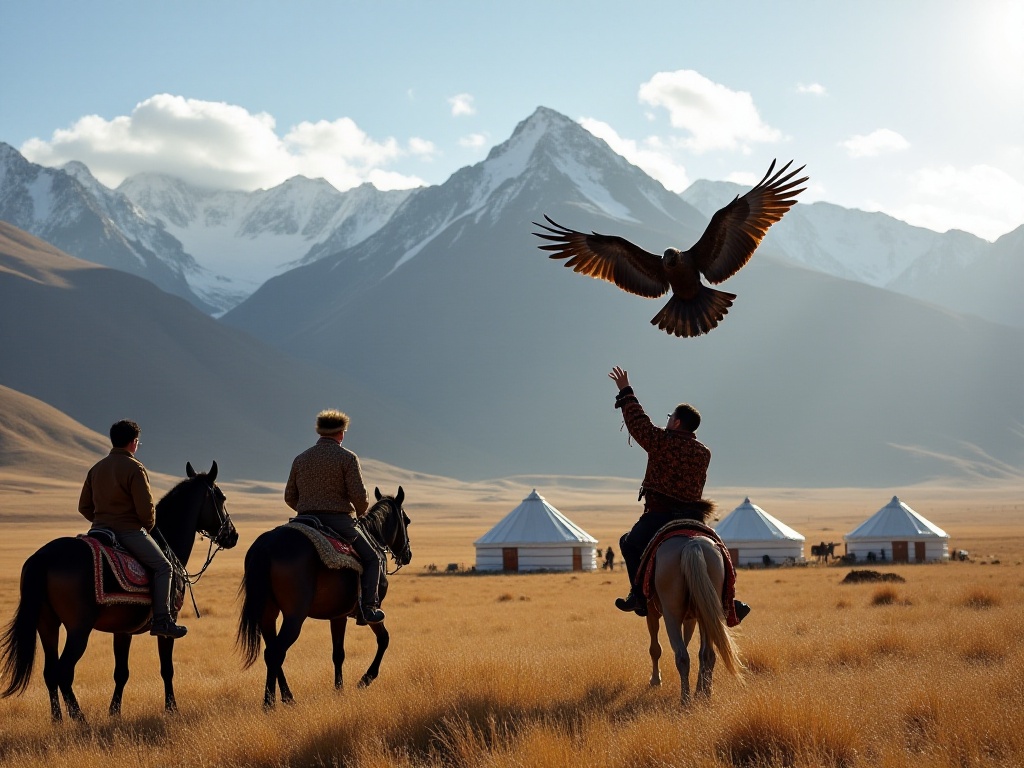Origins
I've always been curious about religious cultures, especially ancient religious traditions like Hinduism. In the winter of 2024, I had the privilege of participating in India's grandest religious festival—the Kumbh Mela. This 48-day pilgrimage festival, held every 12 years, attracted nearly 200 million pilgrims. That's equivalent to the population of 15 Beijings converging on a single city. As a young traveler, I was deeply struck by this number.
From the moment I set foot on Indian soil, I felt its unique atmosphere. The air was filled with a mixture of sandalwood and curry fragrances, and the streets were full of women in vibrant saris and men with painted foreheads. Street vendors enthusiastically sold colorful garlands and offerings to passersby, with the entire city immersed in a festive atmosphere.
Legend
The Kumbh Mela has a fascinating origin story. According to legend, in ancient times, gods and demons fought over a pot of immortality nectar while churning the ocean of milk. The pot was accidentally spilled, and drops of nectar fell in four places: Prayagraj (North Allahabad), Haridwar, Nashik, and Ujjain. This is why the Kumbh Mela rotates between these four cities.
This legend reminds me of the myths I heard as a child. In Hindu tradition, this story has been passed down through generations. Local elders tell children this story with vivid language, exaggerated gestures, and expressions. They believe these sacred places contain infinite power that can cleanse people's souls.
Each city has its unique geographical location and cultural characteristics. Prayagraj sits at the confluence of the Ganges and Yamuna rivers, considered the most sacred location; Haridwar is located upstream on the Ganges and is one of Hinduism's most important pilgrimage sites; Nashik is an ancient city developed around the Godavari River; and Ujjain is famous for its astronomical observation history.
Pilgrims
At 5 AM, I was awakened by the alternating sounds of chanting outside my window. Stepping out of the hotel, I saw countless orange figures—the signature attire of sadhus. Some walked barefoot on rocky paths, others held their arms raised for hours without moving, and some even walked upside down. Many of these sadhus have maintained their ascetic lifestyle for decades.
I met a sadhu named Ram who had kept his right arm raised for 20 years. His right arm had completely atrophied, and his nails had grown like bird claws. When I asked him why he did this, he calmly told me, "This is the path to liberation." His words left me deep in thought.
Besides sadhus, there were countless ordinary devotees from all over India. Elderly people hobbled along with walking sticks; young mothers struggled through crowds carrying infants; and groups of young people moved with the joy of pilgrimage on their faces. Among them were both rich and poor; highly educated intellectuals and illiterate farmers. But here, all worldly differences seemed to disappear.
Bathing Ritual
The scene at the Ganges riverbank is unforgettable. Millions of devotees gathered at dawn, waiting for the auspicious moment. When the first ray of sunlight hit the water's surface, the crowd erupted in deafening cheers, followed by waves of splashing. At this moment, everyone believed that immersing in the holy Ganges water could wash away sins from previous lives.
Standing on the riverbank, I was deeply moved by the sight before me. Countless small oil lamps floated on the Ganges, their flickering lights especially enchanting in the dawn light. Devotees pressed their palms together in prayer, devoutly chanting scriptures. Some sprinkled holy water on their heads, while others fully immersed themselves. The air resonated with bell rings and chanting, creating a solemn and sacred atmosphere.
I noticed many people bringing special copper pots to collect water. They believe Ganges water has magical powers that can purify body and soul. Some people take this holy water home to preserve for special occasions. Interestingly, I saw some young people participating in traditional rituals while recording these sacred moments on their phones. This collision between tradition and modernity was particularly fascinating.

Cultural Exchange
As a foreign tourist, I was deeply affected by the atmosphere here. In the tent city, tourists from around the world coexisted harmoniously with local Indians. I met a German photographer who had attended three consecutive Kumbh Melas. He told me, "Each time I discover new perspectives; everything here is so overwhelming."
In the camp, I met pilgrims and tourists from various countries. There were French yoga enthusiasts who came specifically to experience Indian spiritual culture; Japanese scholars studying Hindu ritual traditions; and African businessmen curious about Indian religious culture. Though we came from different cultural backgrounds and spoke different languages, we were all attracted by the unique atmosphere here.
Most impressive was an elderly Australian lady. She told me this was her third Kumbh Mela. She said, "Here, I feel an indescribable peace. Though it's noisy outside, my heart is exceptionally calm." Her words gave me a new understanding of faith.

Festival Grandeur
Throughout the festival period, activities were diverse and colorful. Besides the most important bathing rituals, there were many spectacular performances and lectures. I particularly enjoyed the evening festival of lights, where tens of thousands of oil lamps simultaneously illuminated both banks of the Ganges—truly indescribable. Indians' ability to organize such large-scale events is truly remarkable.
During the day, different activities were held in various tents. Yoga masters taught traditional poses, scholars explained ancient texts, and artists performed traditional music and dance. I attended a traditional music performance where the combination of sitar and tabla drums transported me to ancient India.
Food was also an important part of the festival. The camp had hundreds of free food stations providing simple but delicious vegetarian meals. I tried various traditional Indian snacks, such as curry bread, yogurt rice, and various sweets. Though the flavors were a bit strong for me, these foods were truly unique.

Modern Challenges
However, with increasing participation, the Kumbh Mela faces many challenges. Environmental pollution is a major problem. Statistics show that during the 2024 Kumbh Mela, over 1,000 tons of waste was generated daily. To address this, the organizing committee deployed over 5,000 cleaning workers and established hundreds of waste sorting stations along the riverbank.
Besides environmental issues, crowd management is also a huge challenge. During peak times, population density in some areas reached alarming levels. To ensure safety, organizers employed high-tech methods for crowd monitoring, including real-time drone surveillance and smart wristbands for personnel tracking.
Traffic congestion is also a serious problem. Although the government added many temporary trains and buses, it still couldn't fully meet the demand. I personally saw many people walking dozens of kilometers to reach the venue. Fortunately, most pilgrims maintained remarkable patience and peaceful attitudes.

Deep Reflection
After attending the Kumbh Mela, I gained a new understanding of faith. In this materialistic age, why are so many people willing to leave everything behind and travel long distances to attend such an event? Perhaps it's this spiritual sustenance that helps people find inner peace in their busy lives.
In conversations with different participants, I discovered everyone had different reasons for coming here. Some sought spiritual comfort, some fulfilled ancestral wishes, and others came out of pure curiosity. But regardless of their reasons, this gathering left a deep impression on them all.
I began to understand why Hinduism has maintained such strong vitality over thousands of years. It's not just a religious belief, but a way of life and cultural tradition. Here, ancient and modern, spiritual and material, individual and collective all find some balance.

Afterword
After returning home, many friends asked if attending the Kumbh Mela was worth it. My answer is: if you want to truly understand Indian culture, the Kumbh Mela is absolutely the best choice. It's not just a religious gathering but a rare cultural experience. Of course, if you decide to go, make sure to prepare thoroughly, including accommodation, transportation, and health precautions. I believe you'll be as deeply moved by this gathering as I was.
Through attending the Kumbh Mela, I not only witnessed the world's largest religious gathering but, more importantly, gained deeper insights into life, faith, and culture. This experience helped me understand that in this rapidly developing world, traditional culture still has its value and meaning.
Before leaving, the German photographer I met gave me a collection of his photographs. Looking through these stunning images, I felt transported back to those days and nights by the Ganges. The Kumbh Mela gave me not just visual impact but also a spiritual baptism. I believe this experience will forever be etched in my memory.


